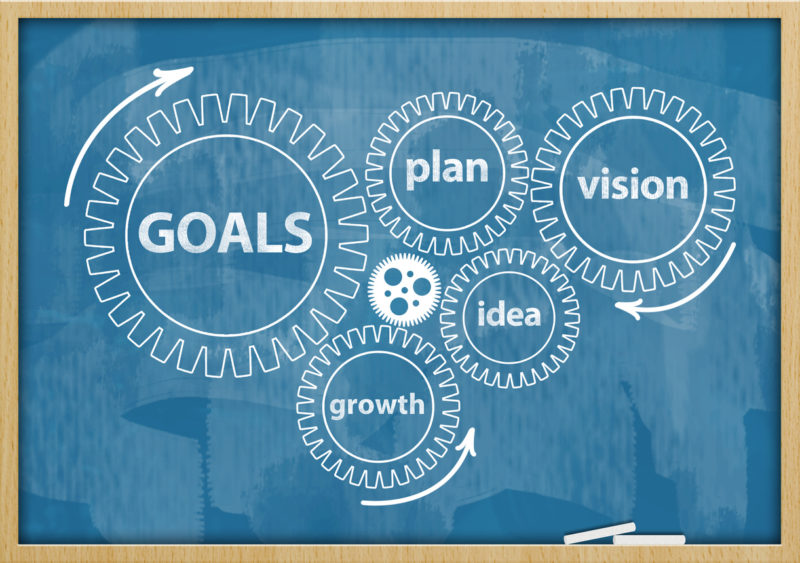When you’re leading a team, it’s not enough to say that you want to achieve something, then hope the universe will bring it or that your employees will figure out how to make it happen. As a leader, you have to pinpoint the highest priority, delegate tasks, and take action.
That’s where The ONE Thing offers a tool for success. Our GPS (Goals, Priorities, Strategies) is designed to help your organization pinpoint your highest-impact goal and manage the steps you need to take to achieve it. Much like a navigational GPS, it allows you to set a clear destination and details the steps you need to take to get there. Your job is to make sure the direction is set before you start on your journey!
Before you give your team direction, get familiar with the way the GPS works.
GPS Basics
One of the biggest challenges any organization faces is to choose what’s most important in the face of a million distractions. The number one lie of productivity is that everything matters equally, and that’s why prioritization is the basis of the GPS. It forces you to focus on ONE big goal, then determine what steps have to be taken in order to achieve it.
1 – Choose one big goal (The ONE Thing) for the year.
3 – Identify three priorities (milestones) that are needed to reach your goal, and rank them in order of priority.
5 – Find five strategies or key tasks that support each of the three priorities, rank them, and assign one person to be in charge of each strategy.
The brilliance of having a one-page GPS business plan is that the process of writing out the list forces your organization to get clear on the ONE thing that would define a successful year, as well as all the things that don’t matter as much. Until the items on your GPS have been accomplished in order, all of your team’s other goals can wait.
Choose Your ONE Thing
Identifying the ONE Thing that matters most for your business is often the most difficult part of the process. Some people don’t take enough time to analyze what will have the biggest impact, while others stress out over the decision and settle on the most obvious goal. Try these tips to get to your ONE Thing:
- Use the Focusing Question – Ask, “What’s the ONE Thing we can do such that by doing it everything else will be easier or unnecessary?”
- Give yourself time, but set a deadline– Choosing a goal too fast could cost you time in the long run if it doesn’t get you closer to your ONE Thing. Give your team time to choose your ONE Thing, but set a deadline to achieve it in order to narrow your focus.
- Consider What You’re Saying No To – Saying yes to your ONE Thing means saying no to things that aren’t on the GPS. Can you live with the things you’re saying no to?
- Choose Something Meaningful – If your team isn’t motivated to reach the goal you’ve chosen, the chances of it happening are low. Align your ONE Thing with your organization’s values to make sure you’re on track.
Set Your Priorities
With sticky notes or a whiteboard, have your team brainstorm what things you could do to achieve your ONE Thing. Give everyone a chance to write their answers down and share them. Once you’ve created your list, look for common themes that can become priorities like “Expand our team with top talent.”
Put your priorities in a secondary list, then rank them by importance. If you could only choose ONE, which would it be? Do the same with the whole priority list, then narrow your priorities down to the top three, four at most. (If you need more than four, be sure that you have a big enough team to support your goal.) Assign ONE person to be in charge of each priority.
Develop Your Strategies
The process for choosing strategies is just like the one to choose priorities except that it’s done largely by the person in charge of each priority. They brainstorm tasks that could be done, sort them into themes, rank the themes, then assign the top five to different people on the team. The goal, at this point, is to establish ownership and accountability throughout the team.
Manage the GPS Throughout the Year
Like the 4-1-1 productivity form, your GPS worksheet should be updated as you make progress. Rather than choosing a review timeline that you think you should stick to, choose one that works for your organization, whether it’s once a month or once a quarter. The important thing is to give yourselves time to make progress, as well as time to look ahead and see where you might be falling off track or need to pivot.
Leaders should use the GPS alongside each employee’s 4-1-1 form to stay on track every month. If you reach your goal, early, you can keep the momentum going by making your ONE Thing bigger or starting over with a new goal.
If you want to create a GPS for your organization but don’t know where to start, The ONE Thing can help. We help leaders prioritize what matters most, align their teams, and achieve extraordinary results. Reach out to us today to learn more about corporate consultation from The ONE Thing!

